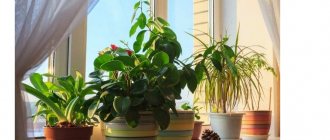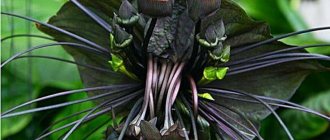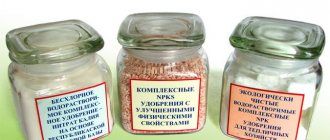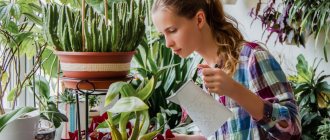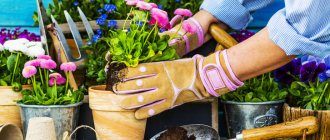Why do some house plants cause allergic reactions?
Small particles from the surface of plant leaves enter the air. A person inhales them and causes a reaction in the body. This manifestation is often provoked by allergenic house flowers, which at first glance look completely harmless.
Moreover, it does not occur in all family members, but only in those who have an individual predisposition. People who are tolerant to allergens will not notice such evaporation. And those who are more susceptible to odors, and especially to allergens, will react.
Most often the problem is caused by pollen or plant sap . In some cases, we forget about other factors that are fraught with danger.
- House flowers are dampness, mold and fungus, inhabitants of the soil.
- The leaves of the flower collect dust - it can also provoke a reaction. Dust often becomes a haven for house mites.
Types of allergies: what determines the severity of the reaction to allergens?
- Hay fever occurs when histamine affects the mucous membranes of the sinuses and eyes. Previously, attacks of sneezing, runny nose and inflammation of the eyes were called hay fever, today in medicine the name “allergic rhinitis” is accepted.
- When the skin is affected, hives occur.
- When the digestive tract is damaged, the body responds to the penetration of the allergen with nausea, vomiting and diarrhea.
- The lungs suffer from spasm and blockage of the airways - these are symptoms of a severe allergic disease, asthma.
The most severe type of allergic reaction is anaphylactic shock. It is accompanied by swelling of the throat and filling of the lungs with fluid. Fortunately, such a pronounced reaction is quite rare, and modern medicine can cope with allergies.
Which plants are dangerous to humans: names, descriptions and photos
Most indoor plants are safe for humans and do not cause allergies . But among them there are those that are better not to breed at home.
Primrose
Belongs to the primrose family and is very popular among gardeners. Therefore, you can find this flower in almost every garden plot. It is one of the first to break through the still frozen soil and delights gardeners with lush flowering for almost a whole month. Bright red, purple, yellow - the color of the buds is varied.
And it is completely safe as a garden plant. But it changes its properties in the opposite direction when it is brought into the apartment. People prone to allergies should not grow it at home. After working with a potted plant, severe irritation and rash may appear on your hands.
If you are a fan of primrose, plant it in your garden. This way you will be completely safe!
Geranium
This flower is very popular in our country. It and its closest relative, pelargonium, are valued for their abundant, long, lush flowering. Many even attribute medicinal properties to geranium - it has a beneficial effect on the functioning of the cardiovascular system.
However, it should be remembered that the foliage of the flower is rich in essential oils, so proximity to geranium can cause illness in the inhabitants of the apartment. The body's reaction can also be provoked by skin contact with the foliage of the flower.
Dieffenbachia
We do not recommend taking him as a neighbor and sharing the same room with him. A very poisonous flower.
Despite the fact that it is very unpretentious, it has beautiful large leaves and can fit harmoniously into the interior of the room, we advise you to be careful. Contact with plant sap can cause severe skin irritation and even burns .
Some pets love to eat indoor plants. Remember that the juice of the plant is very poisonous and under no circumstances should it enter the stomach, even of animals. May cause irreversible reaction.
Poinsettia
Another name for this beautiful indoor plant is Christmas star. And currently it is very popular, especially during the New Year and Christmas holidays. It is great as a gift.
But it definitely won’t bring joy to people prone to allergies. But rather the opposite. The milky juice of the flower, if it comes into contact with the skin, can cause severe irritation and cause a burn.
Spathiphyllum
A beautiful plant, people like to buy it for houses and apartments, as it cleans the air well.
But in some cases, the plant causes an allergy - it is caused by the pollen of the plant. Frequent symptoms of allergies are swelling of the lips and tongue .
At what age does pollen allergy most often begin?
In the first year of life, hay fever practically does not occur - the child still has too little contact with the allergen - pollen - to form a reaction to it. In children under three years of age, allergies to flowers and pollen are possible, but rare. As a rule, it starts at the age of 5-6 years. What flowering plants are the most common allergies in children?
How to avoid bringing an allergen home?
If you like a flower in a specialty store, ask the seller to tell you about it. Garden centers that value their name have qualified staff and their advice can be trusted. In addition, you can Google the name of the plant and the World Wide Web will give you the full breakdown - all the pros and cons.
It is necessary to pay attention first of all to your own well-being and the condition of your household.
If unpleasant symptoms appear after purchasing a plant, it is advisable to exclude contact with the irritant and promptly visit a medical facility.
Allergy to pollen in a child. How to independently reduce the manifestations of pollen allergies?
You can independently alleviate the condition of a child suffering from hay fever only by limiting his contact with the allergen. For this:
- During the flowering season, do not travel with a child who is allergic to flowering and pollen outside the city or into nature.
- Move your walks to the evening. Avoid walking in windy, dry weather.
- Upon returning from the street, change clothes and bathe the child. Put “street” clothes in the wash. Rinse your baby's nose with a pharmaceutical solution of sea water, and his eyes with running water.
- Install an air purifier and humidifier at home.
What should be done in case of such a reaction?
There are several simple rules for allergies to house plants:
- If you or your household have chronic diseases of the lungs or upper respiratory tract, avoid purchasing a questionable plant. No matter how beautiful it is, it is not worth the health of you and your family.
- Ventilate the room regularly and do wet cleaning. Wash the flower more often, give it a shower or wipe the leaves, be sure to use protective equipment - gloves and a mask).
- Medicines can help relieve allergy symptoms. People suffering from allergies usually know about their illness and always have the necessary medications with them. At the first sign of an allergy, take the pills and observe. Relief should occur within 20-30 minutes.
- And of course, it is necessary to leave the room where the source of the allergy is located, or remove the houseplant that caused such a reaction.
- If all else fails, you should immediately contact a medical facility for help.
Allergy treatment
If a child develops an allergic condition associated with increased symptoms of the disease, first aid should be provided immediately. Firstly, you need to immediately remove or stop contact of the allergen with the baby’s body. If you are outside, where there is a variety of pollen from flowering plants, you should immediately go indoors. If an allergy is caused by contact with a pet, you need to remove it from the child. In cases of allergies and certain types of food, you must stop eating it.
If you switched to artificial feeding and the child developed an excessive rash on the body, which is also a manifestation of an allergy, you need to change the type of complementary food for the child. In other words, in the first stages of the fight, contact of the child’s body with the source of allergens should be stopped.
Allergic reactions manifest themselves in different ways
When the attending physician has accurately determined the type of allergen that causes excessive allergic symptoms in the child’s body, the child must be given an antihistamine antiallergic drug prescribed by the doctor. Next, you need to alleviate the symptoms of an allergic disease appearing on the body. Areas of skin where the baby experiences itchy skin can be anointed with salicylic alcohol. Any other alcohol tincture is also good for such cases.
If a child begins to experience attacks of anaphylactic shock, you should immediately call the hospital for an ambulance. Before the ambulance arrives, the child should be provided with an unimpeded flow of air into the lungs. To do this, in a stuffy room, you need to open the window and unbutton the clothes on the child’s chest. You should not use drugs that have an excessive odor, as this can lead to an increase in the symptoms of bronchospasm in the child’s body.
Houseplants that do not cause allergies
In addition to indoor flowers that cause an allergic reaction, there are plants for which the body’s negative reaction to their presence is not typical; it is even useful to keep them to saturate the living space with oxygen:
- lemon tree - everyone knows about the healing properties of this product. The leaves of the plant growing in the house saturate the room with essential oils and phytoncides, which facilitate breathing, improve mood and activate brain activity;
- aloe - widely used for medicinal purposes, the flower is unpretentious, is a powerful immunostimulant, suppresses the proliferation of microbes and cancer cells, grows quickly and activates vitality. Neither its juice nor its leaves cause a negative reaction;
- pelargonium species large-flowered and zonal - purify the air, kill pathogenic flora, repel flies and mosquitoes;
- nephrolepis - belongs to the genus of ferns, but is distinguished by beneficial properties - absorbs radiation from household appliances (TVs, computers), releases large amounts of oxygen, improves mood and brain activity;
- begonia - all types of flowers, except the ever-blooming one, suppress the activity of bacteria, moisturize and purify the air in the house, and release a lot of useful phytoncides;
- chlorophytum is an easy-to-care flower that purifies the air from dust and germs and combustion products. If you fertilize the soil with Activated Carbon during replanting, the beneficial properties of the plant will become stronger.
Many people love to keep flowers in their bedroom, but don't know which ones are best. It is better to choose begonia, aloe, violets, laurel, rosemary or lavender. Balsam, eucalyptus, hibiscus, and tangerine are more suitable for a children's room.
It is important to know! You should not grow a large number of home flowers in one room, since frequent watering increases the humidity in the room, which leads to the establishment of fungi.
